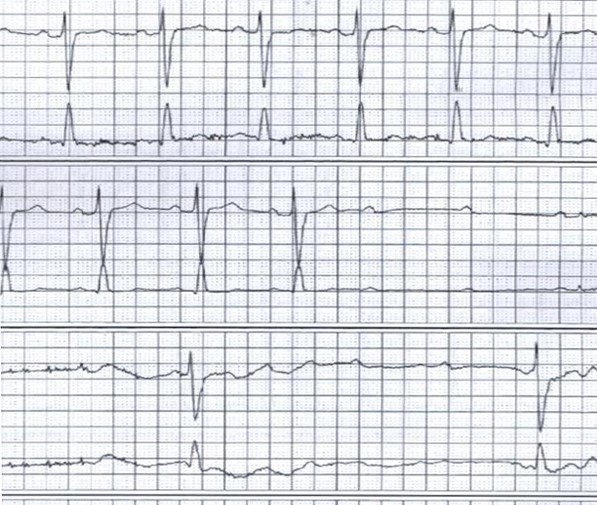A 77-year-old woman comes to the physician because she "passed out." She says that over the last few months she has had several episodes where she feels very lightheaded and must sit down. On one occasion, she did actually lose consciousness and hit her head against a bathroom counter. There are no clear precipitants of these episodes. She denies chest pain or pressure. She thinks that she is more short of breath while playing tennis than she used to be in the past. Her other medical problems include hypertension and mild chronic kidney disease. Her medications include amlodipine, lisinopril, simvastatin, and aspirin.
Her blood pressure is 115/70 mm Hg, pulse is 62/min, and BMI is 23 kg/m2. The patient is in no acute distress. There is a normal S1 and a soft S2. There is a III/VI mid-peaking systolic ejection murmur at the right upper sternal border that radiates to both carotid arteries. Her lungs are clear to auscultation. Her abdomen is soft and non-distended. Peripheral pulses are 2+ and symmetric.
An echocardiogram showed normal left ventricular function, mild left ventricular hypertrophy, and moderate calcific aortic stenosis with an estimated aortic valve area of 1.4 cm2 (normal 3-4 cm2) .
The patient was given a 24-hour Holter monitor. The tracing below was recorded at 1:25 pm.
Which of the following would be the best next step in managing this patient?
Definitions:
Sexual Orientation
A person's pattern of emotional, romantic, or sexual attraction to others, which can include heterosexuality, homosexuality, bisexuality, and more.
Psychological Research
The systematic investigation of psychological processes and behavior through controlled experiments and observation.
Types Of Stressors
Various factors or situations that cause stress, impacting an individual's emotional and physical health.
Self-Actualization
The process of achieving one's maximum potential and talents, conceived as a fundamental drive or need in all individuals.
Q12: The terms precedent and on point are
Q43: An 82-year-old woman is brought to the
Q75: A 46-year-old man with known kyphoscoliosis complains
Q78: A 64-year-old man with a history of
Q116: A 73-year-old man with a history of
Q389: A 35-year-old man comes to the office
Q490: A 45-year-old man comes to the office
Q510: A 62-year-old man comes to the physician
Q689: A new nuclear stress test modality is
Q824: An 84-year-old woman comes to the office